Achieving Scale for STEM Reform | Report | Research Team | Background & Goals | Further Resources | Funding
Final Report
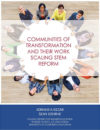
Communities of Transformation and their Work Scaling STEM Reform
Adrianna Kezar, Sean Gehrke (2015)
The findings from an NSF-funded study examining four STEM communities in order to better understand the roles of these communities in advancing the goals of scaling STEM education reform.
Categories: STEM Reform
Download 1,005.71 KB 9552 Downloads
Research Team
Adrianna Kezar
Project Lead and Principal Investigator
Sean Gehrke
Co-investigator
Background and Goals
For the past 20 years, countless reports have called for innovation and reform of undergraduate science, technology, engineering, and mathematics (STEM) education to improve student learning and success. Evidence suggests that current approaches—such as funding individual faculty innovations—are ineffective. Instead, networking efforts have emerged as critical to creating innovation in higher education. Yet we know very little about networks beyond that they are linked to facilitating change.
Achieving Scale for STEM Reform was a four-year, National Science Foundation-funded project that examined and compared four undergraduate STEM reform networks that have different designs but a common purpose—undergraduate STEM reform—in order to understand how the networks can be most effectively designed to spread innovations among network members and ultimately on the campuses where they are employed.
The three research questions examined were:
- How do network members and network leaders perceive undergraduate STEM network design shapes the ability to achieve goals?
- What are the perceived benefits of participation in a network related to change for the individual network members and their campus?
- How do networks form and how are they sustained in ways that help them achieve their goals?
This mixed-method research project utilized interviews, archival research, participant observation, and survey methodology to answer the research questions. Interviews with network leaders, staff, and faculty members; observations of annual meetings; and archival research informed our understanding of the formation, design, and sustaining of these four networks. Surveys were used to understand perceived benefits of network involvement and how network structures shape these outcomes.
STEM Communities of Practice Examined in Study
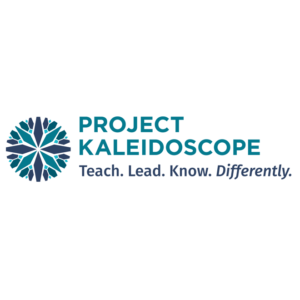 Project Kaleidoscope (PKAL) is a network of STEM faculty across the country that focuses on creating innovation among faculty so that they change their practices. The national PKAL community has nearly 7,000 members at over 1,000 colleges, universities and organizations. PKAL was one of the earliest undergraduate science reform networks formed in 1989 and one of the few networks to be sustained over time.
Project Kaleidoscope (PKAL) is a network of STEM faculty across the country that focuses on creating innovation among faculty so that they change their practices. The national PKAL community has nearly 7,000 members at over 1,000 colleges, universities and organizations. PKAL was one of the earliest undergraduate science reform networks formed in 1989 and one of the few networks to be sustained over time.
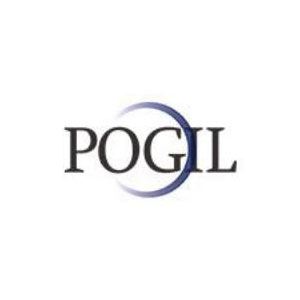 The POGIL (Process Oriented Guided Inquiry Learning) Project is a national professional development and curriculum reform effort whose mission is to connect and support educators from all disciplines interested in implementing, improving, and studying student-centered pedagogies and learning environments. It involves approximately 6500 faculty across a range of disciplines. It began in 2003, with support from the National Science Foundation, to disseminate the specially designed activities that are the core of the POGIL instructional philosophy, and to provide professional development to faculty who were interested in implementing this group learning approach and possibly writing their own activities.
The POGIL (Process Oriented Guided Inquiry Learning) Project is a national professional development and curriculum reform effort whose mission is to connect and support educators from all disciplines interested in implementing, improving, and studying student-centered pedagogies and learning environments. It involves approximately 6500 faculty across a range of disciplines. It began in 2003, with support from the National Science Foundation, to disseminate the specially designed activities that are the core of the POGIL instructional philosophy, and to provide professional development to faculty who were interested in implementing this group learning approach and possibly writing their own activities.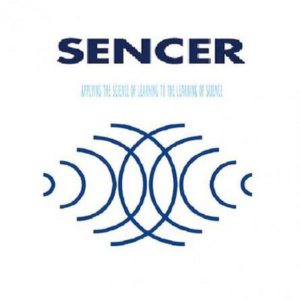 Science Education for New Civic Engagements and Responsibilities (SENCER) is a faculty development and STEM education reform initiative initiated in 2001. SENCER is an approach to STEM education that teaches through complex, capacious, contemporary and contested civic challenges to basic canonical STEM knowledge and methods. The SENCER community includes thousands of faculty members, academic leaders and students from more than 400 two and four-year colleges and universities in 46 states and nine foreign nations.
Science Education for New Civic Engagements and Responsibilities (SENCER) is a faculty development and STEM education reform initiative initiated in 2001. SENCER is an approach to STEM education that teaches through complex, capacious, contemporary and contested civic challenges to basic canonical STEM knowledge and methods. The SENCER community includes thousands of faculty members, academic leaders and students from more than 400 two and four-year colleges and universities in 46 states and nine foreign nations.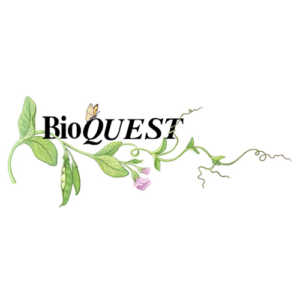 The BioQUEST Curriculum Consortium has a 25 year history of supporting undergraduate biology education reform. It supports international and interdisciplinary collaborations among faculty with the overarching goal of creating learning experiences that more accurately reflect biological science practices. The BioQUEST Curriculum Consortium includes a large network of faculty who have contributed materials and collaborated in the exploration of innovative biology education.
The BioQUEST Curriculum Consortium has a 25 year history of supporting undergraduate biology education reform. It supports international and interdisciplinary collaborations among faculty with the overarching goal of creating learning experiences that more accurately reflect biological science practices. The BioQUEST Curriculum Consortium includes a large network of faculty who have contributed materials and collaborated in the exploration of innovative biology education.Further Resources
Research on Communities of Practice and Learning Communities
Articles
Allee, V. (2000). Knowledge networks and communities of practice. OD Practitioner, 32(4). http://citeseerx.ist.psu.edu/viewdoc/download?doi=10.1.1.465.3908&rep=rep1&type=pdf
Boud, D., & Middleton, H. (2003). Learning from others at work: Communities of practice and informal learning. Journal of Workplace Learning, 15(5), 194-202. https://doi.org/10.1108/13665620310483895
DuFour, R. (2004). What is a ‘professional learning community’? Educational Leadership, 61(8), 6-11. http://www.ascd.org/publications/educational-leadership/may04/vol61/num08/What-Is-a-Professional-Learning-Community%C2%A2.aspx
Sherer, P. D., Shea, T. P., & Kristensen, E. (2003). Online communities of practice: A catalyst for faculty development. Innovative Higher Education, 27, 183-194. https://doi.org/10.1023/A:1022355226924
Stoll, L., Bolam, R., McMahon, A., Wallace, M., & Thomas, S. (2006). Professional learning communities: A review of the literature. Journal of Educational Change, 7(4), 221-258. https://doi.org/10.1007/s10833-006-0001-8
Wenger, E. (2000). Communities of practice and social learning systems. Systems Thinker, 9(5). https://doi.org/10.1177/135050840072002
Wenger, E. (2015). Communities of practice: A brief introduction. Systems Thinker. https://wenger-trayner.com/introduction-to-communities-of-practice/
Books
DuFour, R., & Eaker, R. (2008). Revisiting professional learning community at work: New insights for improving schools. Solution Tree
Hildreth, P. M. (2004). Going virtual: Distributed communities of practice. IGI Global.
Hildreth, P., & Kimble, C. (Eds.). (2004). Knowledge networks: Innovation through communities of practice. Idea Group Publishing.
Lave, J. (1988). Cognition in practice: Mind, mathematics, and culture in everyday life. Cambridge University Press.
Wenger, E., McDermott, R., & Snyder, W. (2002). Cultivating communities of practice: A guide to managing knowledge. Harvard Business School Press.
Conference
Stuckey, B. (2004). Making the most of the good advice: Meta-analysis of guidelines for establishing an internet-mediated community of practice. Paper presented at the IADIS Web-based Communities conference in Lisbon, Portugal.
Research on Social Networks
Borgatti, S., & Foster, P. (2003). The new paradigm of organizational research: A review and typology. Journal of Management, 29(6), 991-1013. https://doi.org/10.1016/S0149-2063(03)00087-4
Burt, R. (2000). The network structure of social capital. Research in Organizational Behavior, 22, 345-423. https://doi.org/10.1016/S0191-3085(00)22009-1
Daly, A. J. (Ed.). (2010). Social network theory and educational change. Harvard Education Press.
Kilduff, M., & Tsai, W. (2003). Social networks and organizations. Sage.
Rogers, E. (2003). Diffusion of innovations. Simon and Schuster.
Valente, T. (1995). Network models of the diffusion of innovations. Hampton Press.
Wasserman, S., & Faust, K. (1994). Social network analysis: Methods and applications. Cambridge University Press.
Communities and Networks Focused on STEM and Education Reform
Partnerships for Undergraduate Life Science Education (PULSE)
The National Numeracy Network
National Center for Science & Civic Engagement
Undergraduate STEM Education Initiative (Association of American Universities)
Center for the Integration of Research, Teaching and Learning Network (CIRTL)
STEM Central
STEM Education Centers Network (Association of Public & Land-Grant Universities)
Center for Peer-led Team Learning
Problem-Based Learning at University of Delaware
Funding
 This project is funded by a four-year grant from the Transforming Undergraduate Education in Science (TUES) program within the Department of Undergraduate Education of the National Science Foundation, under grant number NSF DUE-1226242. The TUES program seeks to improve the quality of science, technology, engineering, and mathematics (STEM) education for all undergraduate students.
This project is funded by a four-year grant from the Transforming Undergraduate Education in Science (TUES) program within the Department of Undergraduate Education of the National Science Foundation, under grant number NSF DUE-1226242. The TUES program seeks to improve the quality of science, technology, engineering, and mathematics (STEM) education for all undergraduate students.
